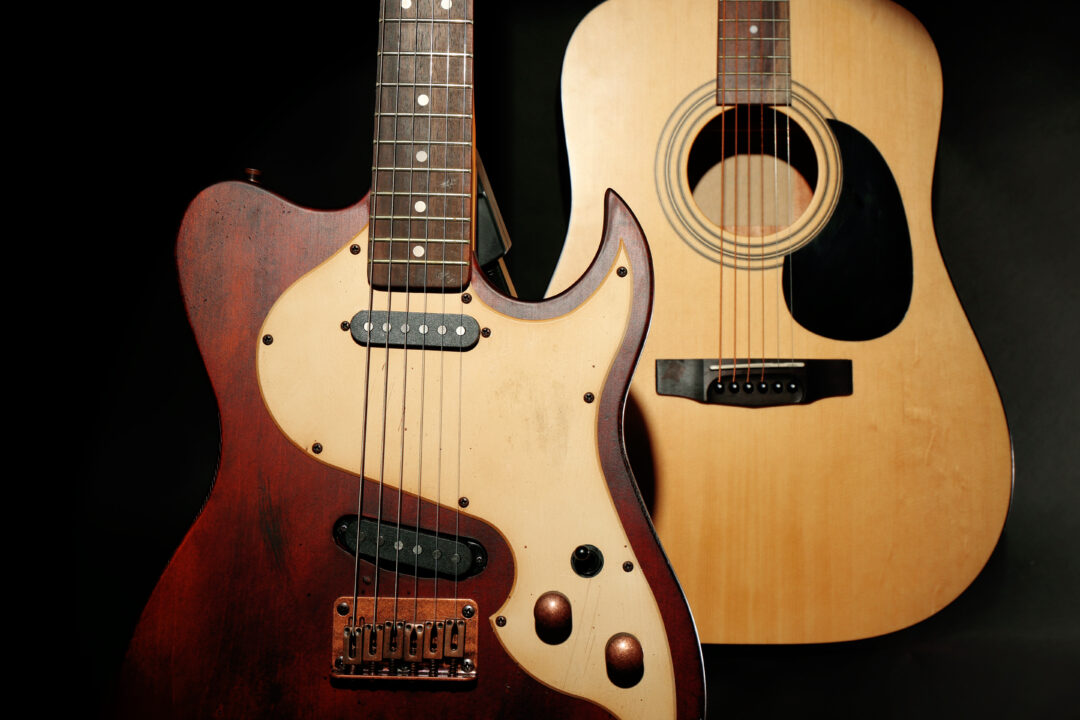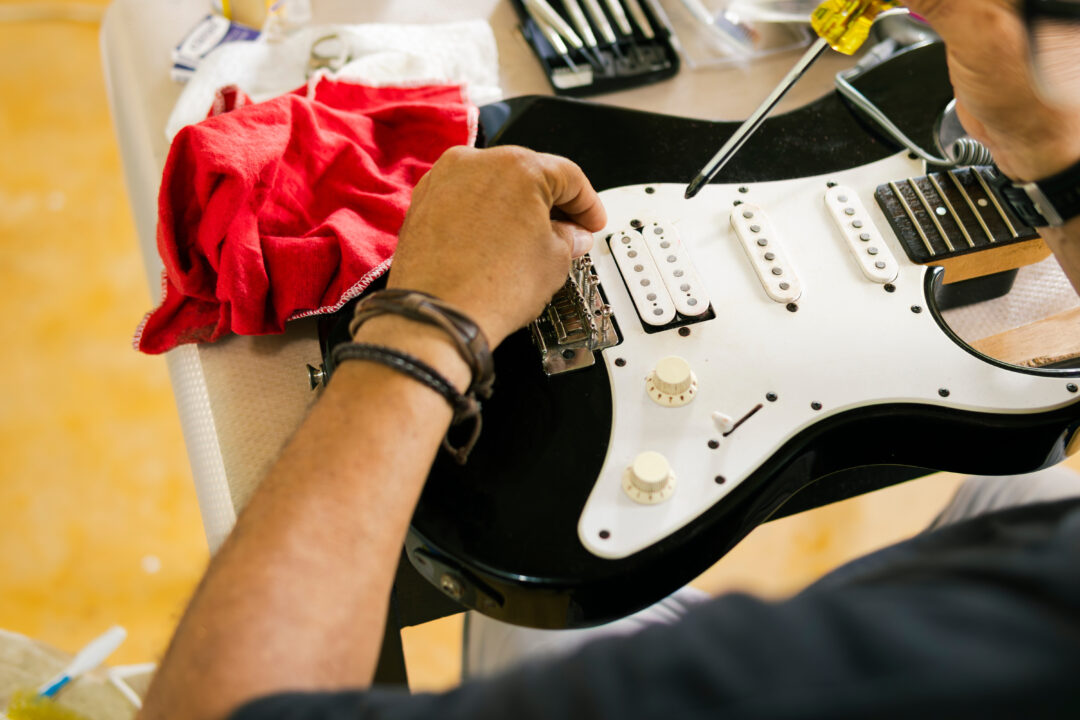
The guitar is one of the most popular and versatile instruments in the world, found in nearly every genre of music from country and blues to rock and classical. But have you ever wondered how this six-stringed instrument actually produces sound? Whether you’re a beginner picking up your first guitar or a seasoned player curious about the mechanics, understanding how a guitar works can deepen your appreciation for the instrument.
In this blog, we’ll break down the science, anatomy, and physics behind how a guitar turns vibrations into music.
The Basics: Strings and Vibration
At its core, a guitar works by converting the energy of vibrating strings into audible sound. When you pluck, strum, or pick a string, it vibrates at a specific frequency, which determines the pitch of the note. The frequency (how fast the string vibrates) depends on three main factors:
- String Length – Pressing a string against a fret shortens its vibrating length, producing a higher pitch.
- String Tension – Tighter strings (higher tension) vibrate faster, creating higher notes.
- String Thickness – Thicker strings vibrate slower, producing lower pitches.
This is why the low E-string is thicker than the high E-string—it’s designed to produce deeper tones.
The Role of the Guitar Body: Resonance and Amplification
While the strings create the initial vibration, the guitar’s body plays a crucial role in shaping and amplifying the sound. In an acoustic guitar, the vibrations travel through the bridge into the soundboard (the top of the guitar), which resonates and projects sound through the sound hole. The hollow body acts like a natural amplifier, enriching the tone with warmth and volume.
In electric guitars, the process is different. Instead of relying on a hollow body, electric guitars use pickups—magnetic coils that detect string vibrations and convert them into electrical signals. These signals are then sent to an amplifier, which boosts the sound and allows for effects like distortion, reverb, and chorus.
The Neck and Frets: Controlling Pitch
The neck of the guitar is where you press down on the strings to change notes. Embedded in the neck are frets, thin metal strips that divide the neck into fixed intervals. When you press a string behind a fret, you shorten its vibrating length, raising the pitch. For example, pressing the third fret on the A string changes the note from A to C.
The scale length (the distance between the nut and the bridge) affects string tension and playability. Longer scale lengths (like those on a Fender Stratocaster) produce a brighter tone, while shorter scales (like a Gibson Les Paul) offer a warmer, more compressed sound.
Tuning and Intonation: Keeping the Guitar in Harmony
For a guitar to sound right, it must be properly tuned. Standard tuning for a six-string guitar is E-A-D-G-B-E (from lowest to highest string). Turning the tuning pegs adjusts string tension, raising or lowering the pitch.
Intonation refers to the guitar’s ability to stay in tune across the entire fretboard. If the intonation is off, notes higher up the neck may sound sharp or flat. Adjusting the saddle position on the bridge helps correct this.
Acoustic vs. Electric: Key Differences
While both acoustic and electric guitars function on the same basic principles, their designs lead to different tonal characteristics:
Acoustic Guitars rely on natural resonance, making them ideal for unplugged performances. Their tone is shaped by body shape (dreadnought, concert, jumbo) and wood type (spruce, mahogany, cedar).
Electric Guitars depend on pickups and amplification. Single-coil pickups deliver bright, crisp tones, while humbuckers produce thicker, noise-resistant sounds. The body material (solid, semi-hollow, or hollow) also affects sustain and resonance.

How Pickups Work (For Electric Guitars)
Pickups are essentially magnets wrapped in copper wire. When a metal string vibrates near the pickup, it disrupts the magnetic field, generating an electrical current. This signal travels through the volume and tone controls, then out to an amplifier. Different pickup configurations (e.g., Stratocaster’s three single-coils vs. Les Paul’s dual humbuckers) create distinct tonal colors.
The Importance of Action and Playability
Action refers to the height of the strings above the fretboard. High action can make a guitar harder to play, while low action may cause buzzing. Proper setup—adjusting the truss rod, bridge, and nut—ensures comfortable playability and optimal sound.
Conclusion: A Perfect Blend of Physics and Art
A guitar is a marvel of engineering and creativity. From the vibration of strings to the resonance of wood or the precision of electronics, every component plays a role in shaping its voice. Whether you’re strumming chords around a campfire or shredding through a stadium solo, understanding how your guitar works can make you a better player and a more informed musician.
If guitar is your passion, you might enjoy a career as a guitar luthier. Guitar Craft Academy offers specialized guitar luthier training to students who wish to take their guitar knowledge to the next level. Learn how to build a guitar from scratch and preserve existing guitars. Learn more about MI’s immersive Guitar Craft program and how to start your career as a guitar luthier.
